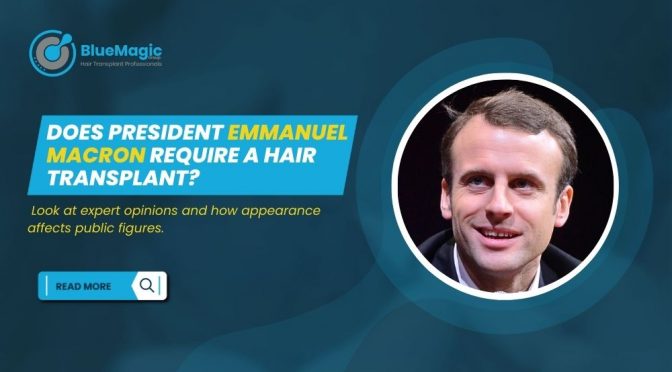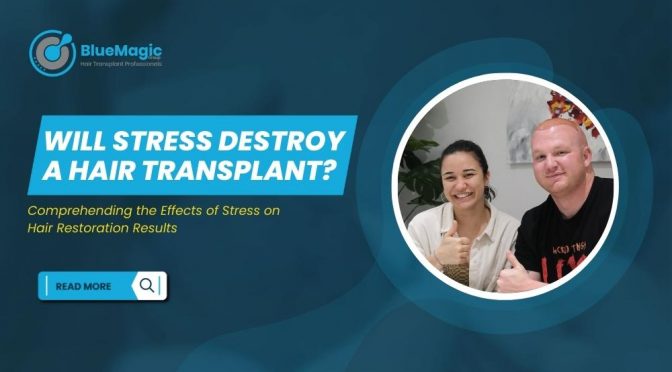The people of France have constantly watched their dynamic leader, President Emmanuel Macron, with whom he has been for years. Apart from his political brain and leadership skills, his looks have also made great fuss over him. In particular, there has been much talk about his hairline in the public domain. This article explores whether Emmanuel Macron might need a hair transplant by looking at the relevance of hair to public figures; discussing the science behind such procedures; and showing the potential benefits it could bring to Macron.
Why Hair is Important in Public Figures?
In politics, appearance can make or break the perception that people have towards their leaders. Particularly, one’s youthful looks directly depend on their hair. A good-looking hairline can boost both self-esteem and confidence among politicians.
Public Figures Who Have Undergone Hair Transplants
To keep up with young age and improve appearance many public figures go for a hair transplant. Some examples include:
- John Travolta: The noted actor went through this process to beat balding issues thus greatly improving his looks when acting.
- Wayne Rooney: The former football player publicly admitted that he had undergone this type of procedure which made him more confident in himself and saved an image he had already built among his fans.
- Elon Musk: There is wide speculation that millennial tech billionaire Elon Musk has done successful transplantation of hairlines helping him appear as a confident character in public.
These instances show that youthful appearances enhanced by thick heads of hair are paramount when it comes to influencing popular perceptions and trust levels.
Macron’s Current Hairline Analysis
Detailed Observation of Macron’s Hairline Over the Years
There have been subtle changes to his hairline that can be noticed by viewing several pictures of Macron at different public events. His hair has become less dense and there are signs of a receding hairline compared to earlier images from his political career to today. This gradual change is normal and often becomes conspicuous due to intense public scrutiny.
- Early Career: At the beginning of his political journey, Macron sported a thick well-defined hairline with no visible signs of thinning or recession.
- Mid-Career: With increasing recognition came some signs of loss around the temples and also rather mild crown areas.
- Current Observations: More recent appearances indicate receding hairlines and thinning particularly at the frontal line as well as on top or above the head region (crown).

Expert Analysis from Trichologists
Trichologists are specialists in scalp and hair health who can provide invaluable insights into President Macron’s current hairline. Developing males generally suffer from receding front hairs as well as thinning crowns in their 30s. Such changes may be precipitated by genetic factors, stress or even emotional strain among other related lifestyle issues.
- Genetics: Hair loss in men mainly occurs because of male pattern baldness which is genetically transmitted.
- Stress: Intense pressure commonly associated with roles such as politicians usually causes this condition characterized by thinning hairs.
- Lifestyle: The condition of their hair may depend on what they eat, how much sleep they get each night and other health-related factors that influence overall body activity including growth rate.
- Science: The Foundation for Hair Implants
For a proper understanding of hair transplant processes and how the issue of hair loss can be mitigated, there is a need to know the science behind it.
How does a hair transplant work?
Hair transplants involve extracting hair follicles from an area that has more hair (this is typically the back of the head) and replanting them in areas with thinning or no hair. By doing this, patients can grow new hair which blends perfectly well with existing hair.
Process Overview:
- Consultation: First step where suitability is checked and plans made.
- Donor Area Preparation: Extraction of hair follicles at the donor site.
- Graft Preparation: Follicles obtained are prepared and ready for implantation.
- Recipient Area Preparation: Balding parts or thinned-out areas are made ready to receive grafts.
- Implantation: Involves placement of hair follicles on the recipient area.
Types Of Hair Transplant Procedures
Follicular Unit Extraction (FUE): It involves removing individual strands from a body part suffering from alopecia and then putting them into another one. This method is known for having minimal scars on your scalp; therefore, it looks natural after transplantation.
Direct Hair Implantation (DHI): A new technique in which specialized tools are used to directly implant hairs onto a patient’s scalp thereby increasing accuracy as well as giving a normal look to the head surface
Comparison:
- FUE: Minimal scarring, quick recovery period, and natural appearance post-surgery
- DHI: More exactness during surgery, survival rates of transplanted hairs improved significantly through direct planting techniques
Why Macron Might Consider a Hair Transplant
A hair transplant could be one of the things that can work well for a man like Emmanuel Macron who is in the public eye.
- Enhanced Appearance: When someone has a fuller hairline, they look younger and more vibrant.
- Boosted Confidence: An improved appearance can have an impact on how you feel about yourself, which is very important in high-stake stressful positions.
- Positive Public Perception: A tidy look makes people think highly of a leader, making him widely accepted and respected by the country as well as his policy.
Potential Impact on Macron’s Image
Macron’s global prominence may subtly lead to enhanced image perception if he underwent a hair transplant. For instance, a fuller hairline projects vitality and energy which resonate with audiences both within France and without.
This will even improve his confidence thus enabling him to efficiently execute his duties during various diplomatic and public appearances he makes.
Addressing Potential Concerns
It’s important for Macron or any other person considering a hair transplant to deal with any reservations that might arise from it.
-
Safety and Side Effects
Modern-day hair transplants are not risky procedures with fewer side effects. These side effects include temporary swelling, slight pain, and redness around the site of implantation. Commonly these would go away within a week or two.
-
Recovery Time
The time taken for complete healing depends on the kind of surgical procedure done for a hair transplant. After FUE patients usually get back to their routines after only several days as recovery is shortened compared to other techniques. Adhering to proper post-operative care instructions promotes proper growth of new hairs and a faster wound healing process.
-
Public Perception and Media Attention
In case Macron opts for this surgery, he may easily attract media attention due to his status quo as an eminent political figure globally. It is therefore necessary that such concern should be managed strategically so as not to have any negative impact on the image of the public domain.
-
Transparency vs. Privacy
Deciding whether to hide or reveal a hair transplant is a private choice for each person. Some politicians may choose to discuss it openly, while others will prefer not to expose their privacy. Typically, both methods have some benefits and drawbacks depending on what one is comfortable with and how it will affect the general public’s perception.
Conclusion
A lot of people have shown interest in Emmanuel Macron’s hairline; hence, considering going through this surgical procedure could be beneficial. Thus, Macron may look different when he has a fuller hairline which could make him appear more powerful and confident among others. As seen with other prominent people, hair transplants can lead to a major change in looks as well as people’s ideas about them. It is a life-changing decision to explore the available options at BlueMagic Group Clinic like many people seeking hair restoration to regain self-confidence and youthful looks.
In conclusion, these choices for public figures such as President Macron considering hair transplant entail trading off between better appearance/confidence and scrutiny/potential adverse effects that may result from this process. In case it happens that Macron chooses to go by it or not, clearly hair transplantation can be helpful for those who would like their youthful vigour – which relates greatly to their audience – preserved thus maintaining their young-looking state even at an older age than current society’s average age suggests.

